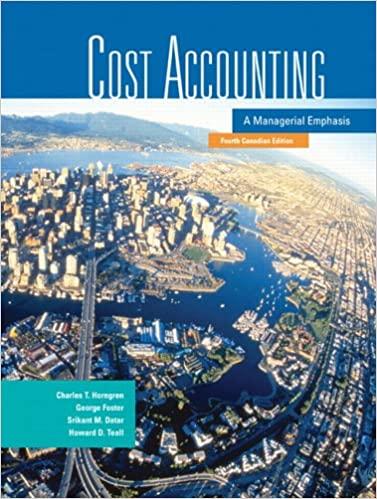Joint cost allocation, process further or sell byproducts. (CMA) The Goodson Pharmaceutical Company manufactures three joint products
Question:
Joint cost allocation, process further or sell byproducts. (CMA) The Goodson Pharmaceutical Company manufactures three joint products from a joint process:
Altox, Lorex, and Hycol. Data regarding these products for the fiscal year ended May 31, 2007, are as follows:
Altox Lorex Hycol Units produced Selling price per unit at splitoff Separable costs Final selling price per unit 170,000 500,000 330,000 $ 4.20 — $ 2.40 — $1,680,000 — $ 6.00 The joint production cost up to the splitoff point where Altox, Lorex, and Hycol become separable products is $2,160,000 (which includes the $21,000 disposal costs for Dorzine as described below).
The president of Goodson, Arlene Franklin, is reviewing an opportunity to change the way in which these three products are processed and sold. Proposed changes for each product are as follows:
Altox is currently sold at the splitoff point to a manufacturer of vitamins. Altox can also be refined for use as a medication to treat high blood pressure; however, this additional process¬
ing would cause a loss of 20,000 units ofAltox. The separable costs to further process Altox are estimated to be $300,000 annually. The final product would sell for $6.60 per unit.
Lorex is currently processed further after the splitoff point and sold by Goodson as a cold remedy. The company has received an offer from another pharmaceutical company to purchase Lorex at the splitoff point for $2.70 per unit.
LIycol is an oil produced from the joint process and is currently sold at the splitoff point to a cosmetics manufacturer. Goodson’s research department has suggested that the com¬
pany process this product further and sell it as an ointment to relieve muscle pain. The additional processing would cost $90,000 annually and would result in 25% more units of product. The final product would be sold for $2.16 per unit.
The joint process currently used by Goodson also produces 50,000 units of Dorzine, a hazardous chemical waste product. The company pays $0.42 per unit to dispose ofthe Dorzine properly. Dietriech Mills, Inc., is interested in using the Dorzine as a solvent; however, Goodson would have to refine the Dorzine at an annual cost of $51,600. Dietriech would purchase all the refined Dorzine produced by Goodson and is willing to pay $0.90 for each unit.
Instructions Form groups of two or more students to complete the following requirements.
Required 1. Allocate the $2,160,000 joint production cost to Altox, Lorex, and LIycol using the estimated NRV method.
2. Identify which of the three joint products Goodson should sell at the splitoff point in the future and which ofthe three main products the company should process further to maximize profits. $upportyour decisions with appropriate calculations.
3. Assume that Goodson has decided to refine the waste product Dorzine for sale to Dietriech Mills, Inc., and will treat Dorzine as a byproduct ofthe joint process in the future.
a. Evaluate whether Goodson made the correct decision regarding Dorzine. $upport your answur with appropriate calculations.
b. Explain whether the decision to treat Dorzine as a byproduct will affect the decisions reached in requirement 2.
Step by Step Answer:

Cost Accounting A Managerial Emphasis
ISBN: 9780131971905
4th Canadian Edition
Authors: Charles T. Horngren, George Foster, Srikant M. Datar, Howard D. Teall





